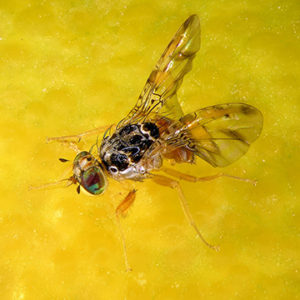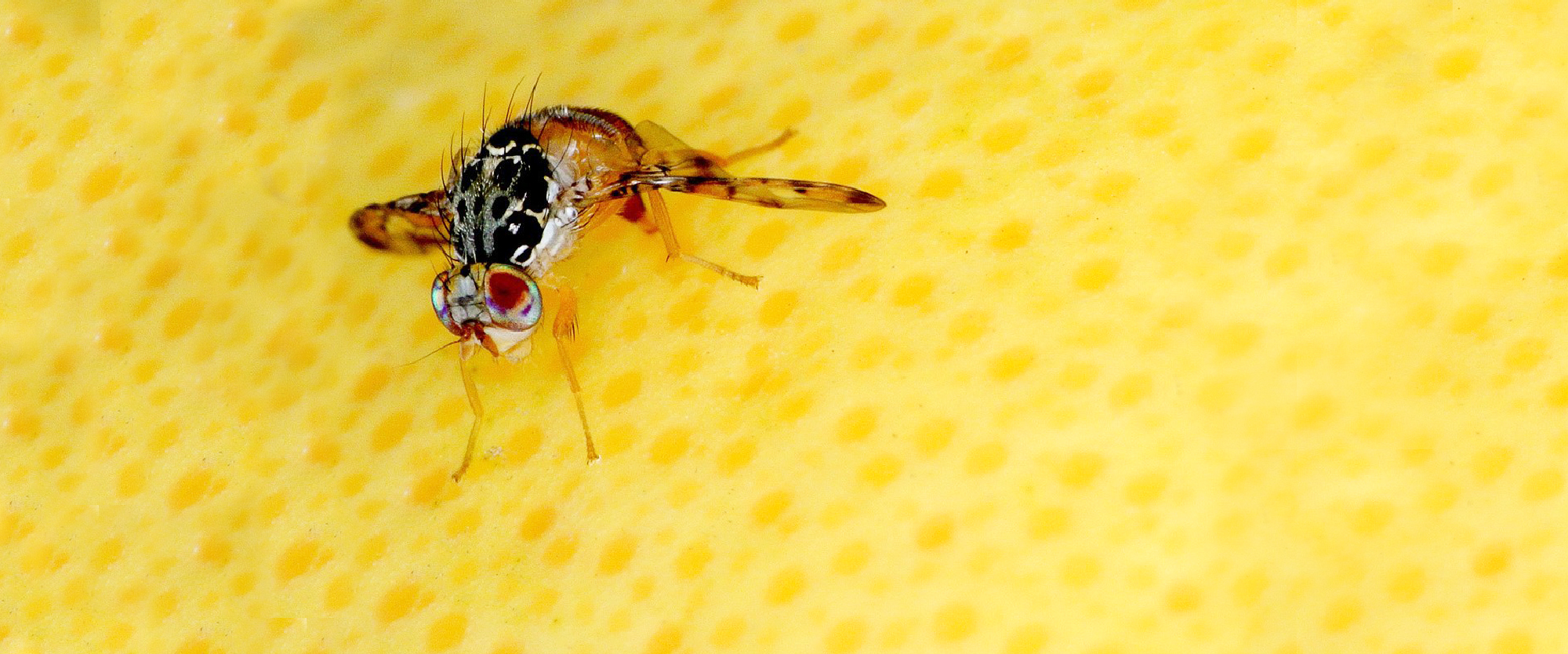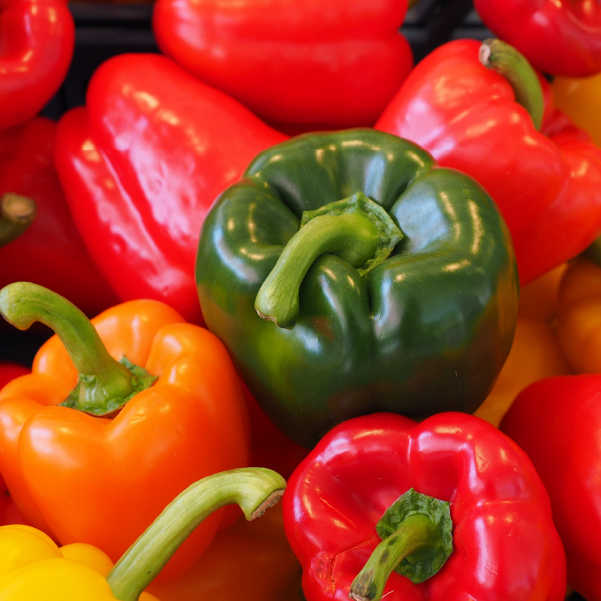The Mediterranean fruit fly (Ceratitis capitata), also known as the Medfly, is among the most economically important fruit fly species because of its ability to survive in cooler climates and to infest hundreds of tropical fruits and vegetables, causing severe degradation and economic loss. The Medfly lays its eggs in the fruit by making a puncture with the ovipositor under the skin surface of the fruit or vegetable. The puncture is initially dark green to begin but changes to a yellowish-brown color as a result of the wound inflicted. Once the larvae hatch, they dig a tunnel on the surface and later move deeper into the fruit, all the way to the core. The larvae feed on the fruit.
Damage
The oviposition of the females and the larval feeding cause severe damage to fruits and vegetables. Injury on the fruit rind, from the ovipositor and the larval feeding on the host flesh make the fruits and vegetables unmarketable, in addition, the injury inflicted allows the entrance of pathogenic organisms and particularly fungi.
There are specific sustainable solutions for different species of fruit flies, including the use of Sterile Insect Technique (S.I.T), which BioBee specializes in, as well as traps such as BioBee’s NMF.
For more information contact your local BioBee field agent.


















